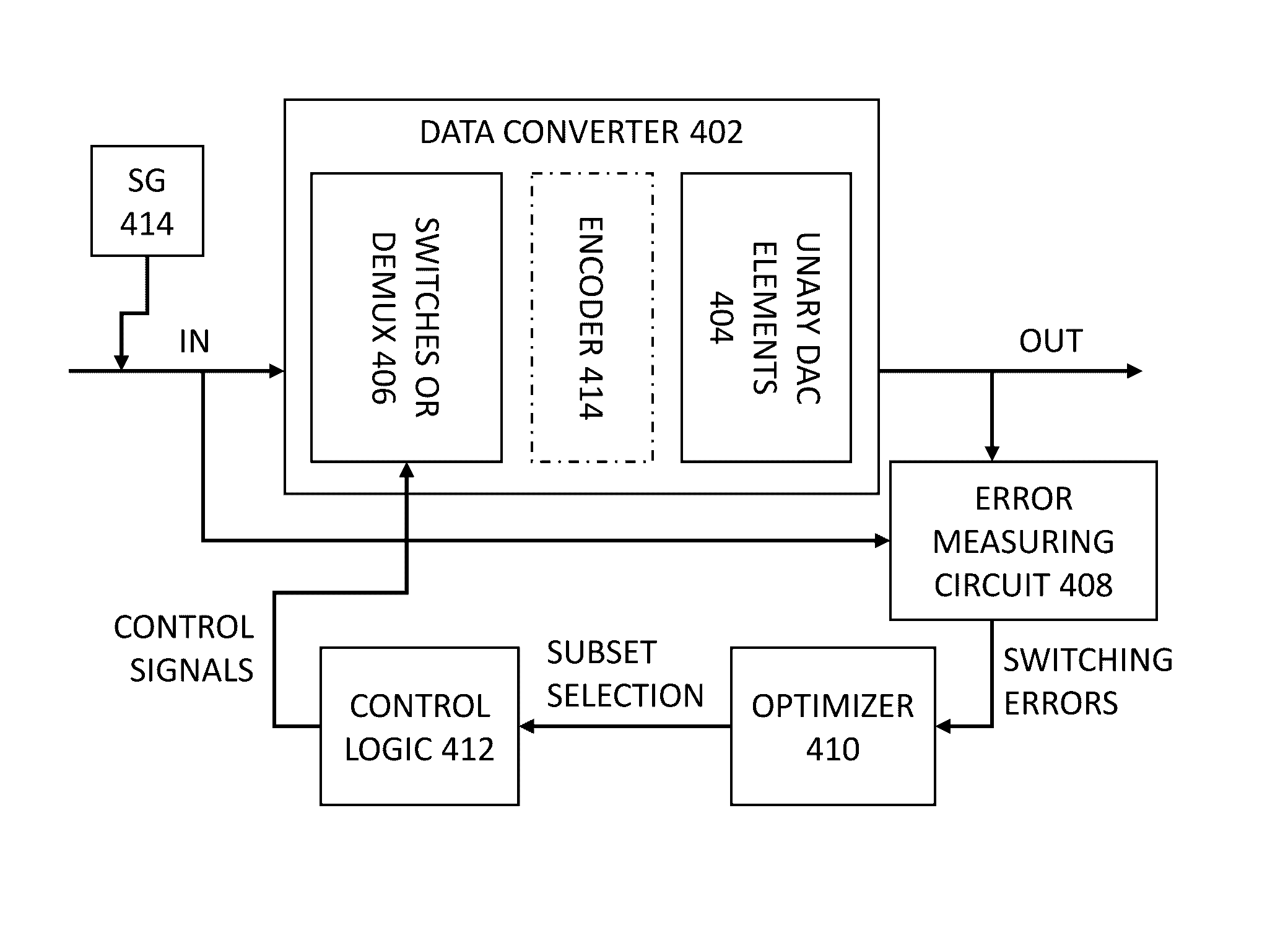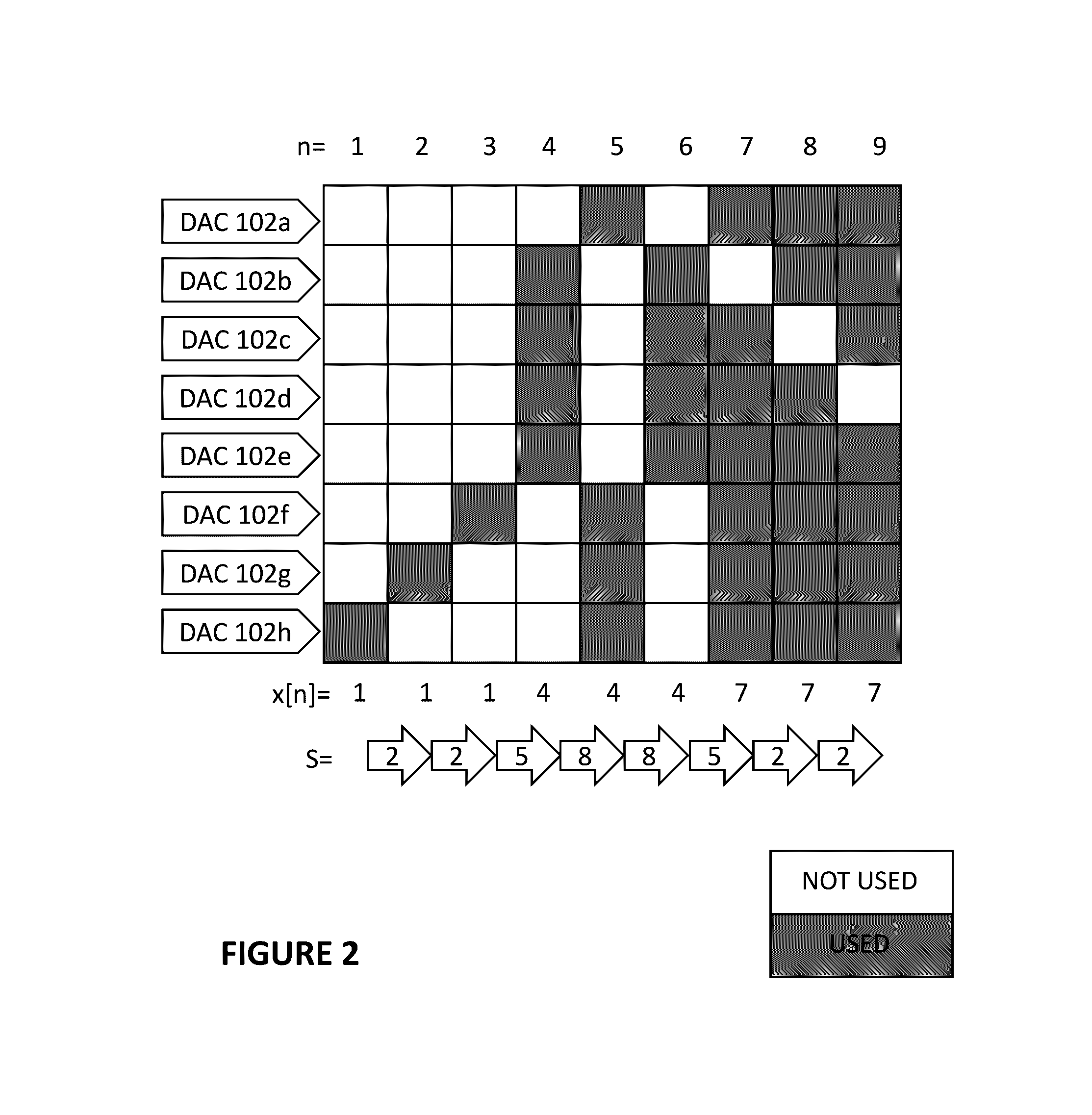Reducing switching error in data converters
a data converter and switching error technology, applied in the field of integrated circuits, can solve the problems of second order distortion and worsen and achieve the effect of worsening the effect of switching errors
- Summary
- Abstract
- Description
- Claims
- Application Information
AI Technical Summary
Benefits of technology
Problems solved by technology
Method used
Image
Examples
Embodiment Construction
[0016]Basics of Digital-to-Analog Converters
[0017]A digital-to-analog converter (DAC) produces a quantized (discrete step) analog output in response to a digital input code. The digital input may include, e.g. input from transistor logic (TTL), emitter-coupled logic (ECL), complementary metal-oxide-semiconductor (CMOS) circuits, or low-voltage differential signaling (LVDS), while the analog output may be either a voltage or a current. A DAC typically includes a set of individual DAC elements which are each weighted to generate a current or a voltage that makes up a fraction of the full scale of the digital input code. The individual DAC elements could comprise one or more of: current sources, voltage sources, resistors, capacitors, transistors, or any suitable circuitry, for generating a weighted output. Typically, the digital input drives switches to the individual DAC elements to selectively turn on an appropriate set of individual DAC elements, whose combined weight represents th...
PUM
 Login to View More
Login to View More Abstract
Description
Claims
Application Information
 Login to View More
Login to View More - R&D
- Intellectual Property
- Life Sciences
- Materials
- Tech Scout
- Unparalleled Data Quality
- Higher Quality Content
- 60% Fewer Hallucinations
Browse by: Latest US Patents, China's latest patents, Technical Efficacy Thesaurus, Application Domain, Technology Topic, Popular Technical Reports.
© 2025 PatSnap. All rights reserved.Legal|Privacy policy|Modern Slavery Act Transparency Statement|Sitemap|About US| Contact US: help@patsnap.com



